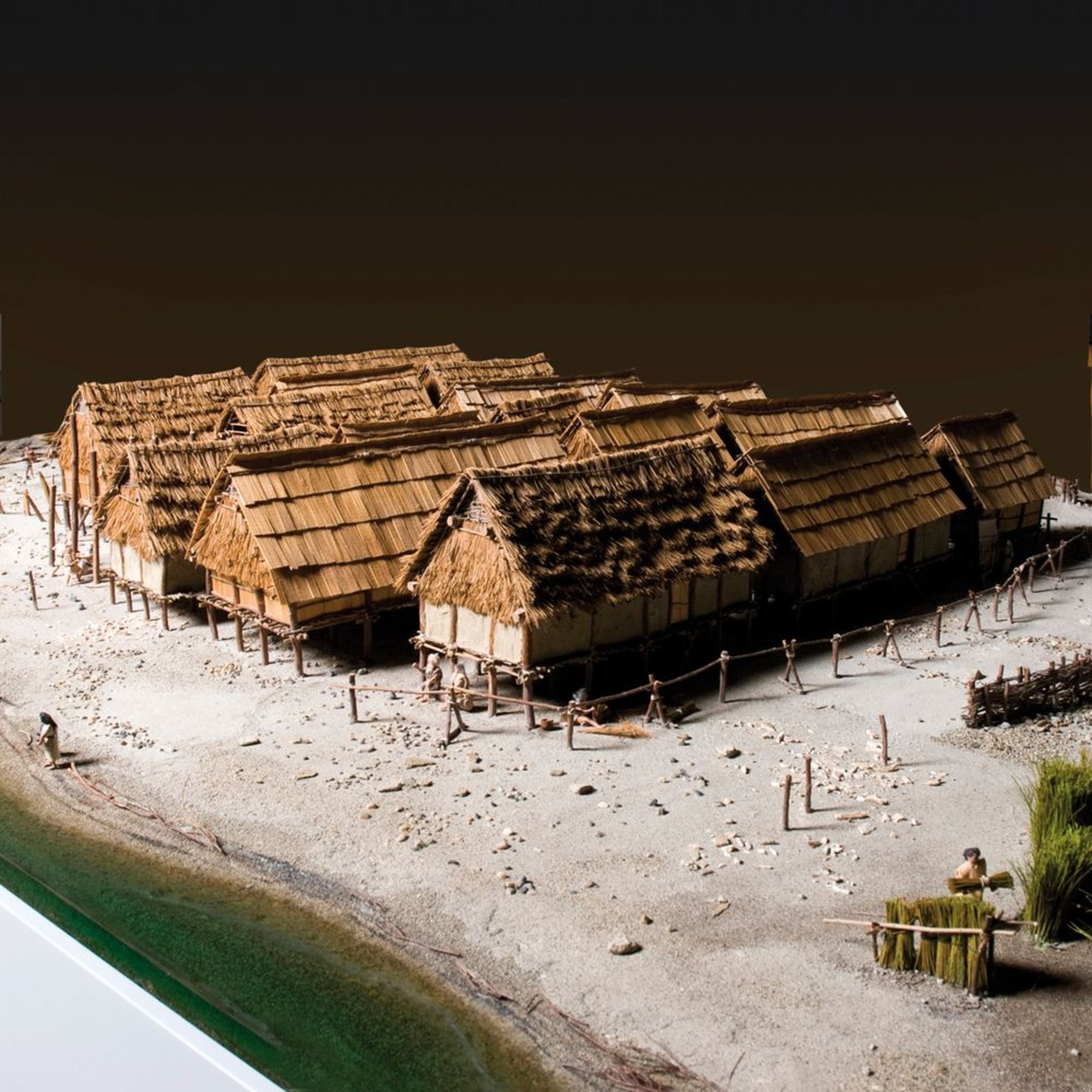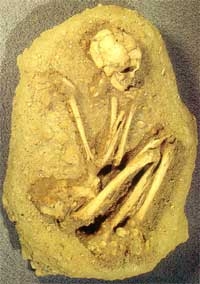- Home
- The village
- What about the dead ?
- Graves, but not from the same period
An Iron Age cemetery near Chalain
Research carried out at the end of the 19th century showed that on the end moraine at Lake Chalain a little more than a kilometer from the lakeshore, in the place called Le Molard des Isles, there are nearly 80 early Iron Age tumuli, dating from 800 to 600 BCE. Nevertheless, solid evidence suggests that this protohistoric cemetery that includes prestigious burials with long swords made of iron or bronze, was in use much earlier, at least since the early Bronze Age.
It is possible that some of these tumuli were built over much older funerary structures, like those at Lavans-les-Dole (Jura), which have yielded diamond-shaped arrowheads and a segmented bead made of bone, i.e. similar to objects found at villages at Chalain from the 30th century BCE.
However, much work remains to be done in this domain.
Near Clairvaux, tombs from the VIth millennium BCE
At Soyria, barely two kilometers from Lake Clairvaux, an Iron Age tumulus was built over two older burial tombs. The bodies were covered with ochre, which suggests that they could be dated to the 6th millennium BCE, contemporaneous with the very first villages at Chalain.
One interesting fact should be pointed out: the base of these Neolithic tombs is located 50 centimeters higher than the current level of the ground around the tumulus, indicative of the high level of erosion around these high points in the landscape. It is clear that not all the dead were treated in such a manner. It is also clear that the erosion could have erased a good number of these tombs reserved for a privileged few.
Neolithic burial, Soyria.
Jura Archaeological Museum, Lons-le-Saunier.
Photography: J.-L. Mathieu

